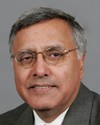Thank you.
Good afternoon, ladies and gentlemen.
By way of introduction, my name is Linda Garwood-Filbert. I am currently a special projects officer at Stony Mountain Institution. My responsibilities are to research and draft responses for the commissioner, deputy commissioner, warden, and correctional investigator, and to develop convening orders for inquiries and investigations and action plans for both local and national investigations. I currently have 30 years of experience with the Public Service of Canada, 28 of which have been devoted to Correctional Service both at home and abroad.
In late 2006 I was selected for the newly formed position of correctional component director of the Kandahar provincial reconstruction team. This position was meant to enhance the rule of law portfolio, as there was no correctional expertise in Kandahar. This component added to the already established efforts on policing and judicial reform and would provide a comprehensive approach to justice sector reforms. I deployed to the Kandahar provincial reconstruction team on February 5, 2007, and remained there until December 22, 2007.
Thereafter, from January 2, 2008, until January 2, 2009, I was working with the United Nations Office on Drugs and Crime in Afghanistan as the international coordinator for prison reform. My main responsibilities included the development and implementation of the new prison regulations, completion and implementation of the priority reform and restructuring process, prison infrastructure throughout Afghanistan, training and mentoring of prison staff, and development of educational and vocational programming, in addition to a focus on education and post-release opportunities for women and girl prisoners. Overall, I was in Afghanistan for close to two years visiting and monitoring the Afghan prison system.
My primary roles as the correctional component director were to establish a correctional presence at the KPRT; to assess infrastructure challenges primarily at Sarposa Prison but also at the National Directorate of Security and to a lesser extent at the Afghan National Police headquarters detention centre; to develop a full understanding of the central prison department, with a focus on the training and mentoring needs of correctional personnel; and lastly, to establish working relationships with the justice sectors and Government of Afghanistan stakeholders in Kandahar with corresponding links to the UNAMA correctional adviser and the relevant ministries in Kabul.
These links were intended to assist us in extending the existing authority of the Ministry of Justice and the central prison department to the province of Kandahar, thereby impacting justice sector reform. This would also provide a forum through the prison working group in Kabul to have issues specific to Kandahar addressed on a national level.
Not only did I work in concert with the Canadian Forces, DFAIT, and CIVPOL, but I was also able to work closely with the International Committee of the Red Cross, the Afghanistan Independent Human Rights Commission, NGOs, and other correctional advisers from the United Nations, United States, Norway, and the United Kingdom. Most importantly, I was able to work closely with the warden of Sarposa Prison, his management team, and Government of Afghanistan officials.
The end result was a program proposal, via the global peace and security fund, that focused on infrastructure upgrades, staff training, inmate education and vocational training, living conditions, and health care, with a focus on gender issues and the needs of children, all within the context of international human rights standards for prisoners.
In terms of prison visits, we commenced making site visits as early as February 13, 2007, well before the May 2007 supplementary arrangement signed between the Governments of Canada and Afghanistan that explicitly set out our monitoring rights. During this period, we conducted 13 visits to Sarposa and two visits to NDS. Following the arrangement, another 20 visits to Sarposa were conducted as well as 10 additional trips to NDS prior to my departure in late December.
In other words, in 2007 alone we visited Sarposa Prison on 33 occasions, the National Directorate of Security on 12 occasions, and the Afghan National Police detention centre on two occasions, for a total of 47 visits. These visits were usually unannounced. Overall, I can safely say that Correctional Service was, for the most part, allowed free and unfettered access to Sarposa Prison, the National Directorate of Security, and the Afghan National Police headquarters.
Throughout my mission, I talked to prisoners all the time. Many of these instances were informal in nature. Site visits would include general dialogue and interviews of prisoners, detainees, and prisoner advocates to get their accounts of living conditions and treatment within the prison system. Typically complaints would revolve around food, living conditions, access to family visits, and medical care. These are also typical complaints from inmates in Canada.
My specific role would be to assess treatment against the UN standard minimum rules for treatment and give feedback to the administration on improvements. I would typically look for signs of injury or of distress attributed to the use of shackles, and I would also look at specific medical complaints if they were brought to my attention.
However, in addition to this role, I was also involved in the more formal process of detainee monitoring. When conducting these monitoring interviews with detainees at both Sarposa and NDS, my DFAIT colleague and I were always provided with an office or area where we could talk privately with the detainee. During these visits, CSC observed approximately 26 detainee interviews. While some inmates would recount what they had heard or were told or what had happened to them personally, to the degree possible I attempted to substantiate their claims. Although I took care to look for them, there were no physical signs of abuse to validate their statements. In all my visits and interviews with these inmates, I personally never saw any signs of physical abuse or torture. All detainees who knew they were captured by the Canadian Forces spoke well of their treatment by them, including receiving medical care when needed.
Nonetheless, in April 2007 I reported two prisoner allegations of mistreatment to the AIHRC and ICRC. Following that, all other claims and observations were documented in my reports.
Specifically, there was one detainee who had been told by others about beatings, another who stated he thought he had heard a beating in the next cell, and six who indicated they themselves had been beaten, including two prisoners who indicated that they had been beaten by the Afghan National Police prior to transfer to the National Directorate of Security. Lastly, on a visit to the National Directorate of Security on November 19, 2007, comments were made regarding the discovery of a braided piece of electrical cable found in the office of the director of investigations during the November 5, 2007, visit, the reporting of which by DFAIT led to his subsequent removal.
The only observable treatment not specifically related to Canadian-transferred detainees that I noted at both sites that was contrary to the United Nations standard minimum rules of treatment was the consistent use of chains as restraints on national security prisoners; at the National Directorate of Security, denial of fresh air exercise, holding child detainees with adults, and on one occasion the use of light deprivation; and at Sarposa Prison, the arbitrary detention of prisoners past their release date. In each of these instances, I immediately spoke to the warden and director and reported these incidents to the UNAMA corrections adviser, DFAIT, and Correctional Service with regard to action plans and resolution.
Initially we would also receive calls from the AIHRC informing us that the directorate was not allowing them entry into the facility, and we would mediate on their behalf. This, however, improved over time. The UN human rights officer also indicated that while they had access to Sarposa and the ANP detention centre, they had not been successful with NDS.
I should note that there were a few occasions in which we were not allowed access to certain areas of the facilities, such as when they were in the middle of transferring prisoners. However, based on my experience, these were justified and were not unusual.
During the time I was in Afghanistan, I noticed an improvement in the general conditions of Sarposa Prison. Some examples would be the installation of a new septic system, medications for the clinic, four new security towers, solar lighting, looms and a new carpentry shop, an on-site training centre, and basic officer training, just to cite a few.
The prison officials I worked with were generally receptive and eager to work with us to help improve prison conditions. While I was working for the UN, I also had the opportunity to visit prisons in other parts of the country. By comparison--and following significant investment by Canada--Sarposa Prison in Kandahar was considered to provide some of the best prison conditions in the country.
In conclusion, during the time I spent in Afghanistan, I was impressed with the work being done to ensure the rights and standards that are to be afforded to prisoners and detainees. I witnessed correctional personnel in the central prison department making a sincere effort to learn and develop and to adhere to international standards to the best of their ability. Their acceptance of my department and their cooperation set the stage for the advancement of justice sector reform and the rule of law in Kandahar.
Thank you.



